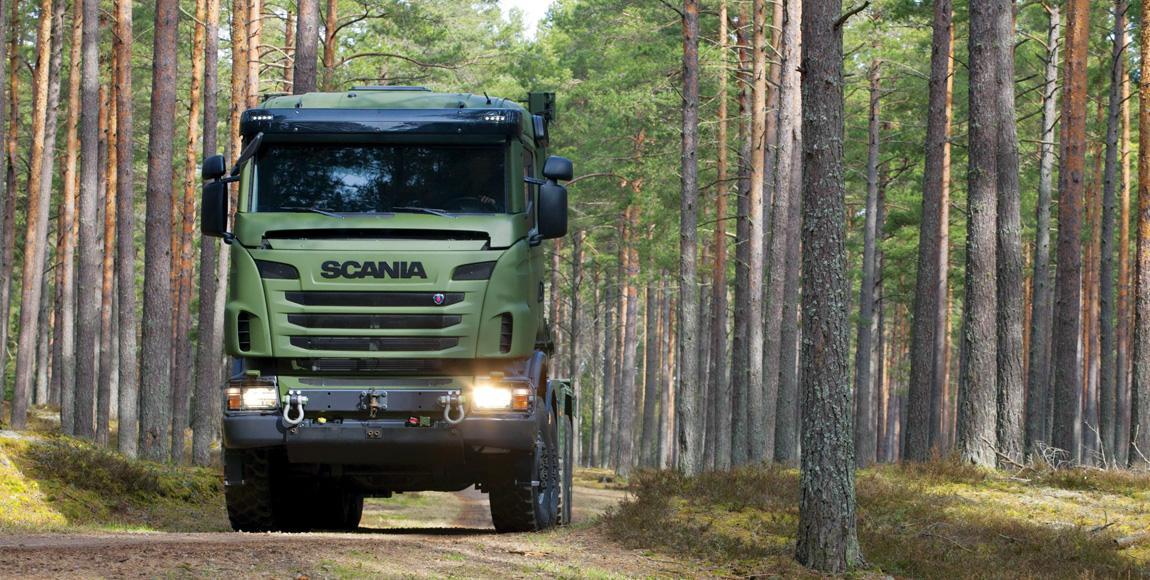Step into the woods

Steep ascents, sharp rocks, shale, mud, dust and sand are just some of the obstacles vehicles operating in the forestry industry encounter daily. What is the state of the industry and what role does vehicle technology play? Gareth Greathead finds out.
Logging is defined as the cutting, skidding, bucking and then loading of logs onto trucks. According to Forestry South Africa, the sector employs approximately 150 000 people and contributes 0,6 percent (or
R31 billion) to the gross domestic product (GDP) of the country.
This equates to approximately 11,1 percent of our agricultural GDP and 5,1 percent of South Africa’s manufacturing GDP (not far off that of automotive manufacturing). When all is said and done, this amounts to an export value of over R28,8 billion annually.
In South Africa, approximately 0,4 percent of our country’s landmass is covered by natural forests, while timber plantations cover 1,2-million hectares. Trees are considered renewable, because new trees can be planted to replace those that have been harvested.
Our plantations, along with the natural forests, play a role in curbing climate change. As such, plantations are harvested in cycles with only nine percent of the total being harvested each year.
Wood is also carbon neutral; this means that the tree absorbs more CO2 in its lifetime than is released when the tree is harvested, transported and processed. As such, wood is seen as a sustainable alternative to concrete and steel in construction. Similarly, using paper bags contributes far less to climate change than plastic.
The timber industry is tasked as a custodian of our few natural forests and 25 percent of the country’s remaining natural forests are conserved on forestry-owned land. The industry is responsible for protecting these areas against invasive species and other biological threats.
Transport in forestry
The forestry industry makes use of a mix of vehicles to get the logs from the point of harvest to an on-site depo and finally to the mill and onwards. Francois Oberholzer, operations manager at Forestry South Africa, says: “Due to the specialist nature and challenges associated with hauling of raw timber, most plantation owners make use of outsourced transport.”
He explains: “Sometimes, even two ‘transporters’ may be contracted depending on the location and accessibility of the plantation. One may operate the heavy equipment, such as a skid steer, to pull trees from where they are harvested to the depo, where they can be collected by the logging trucks.”
Alternatively, if there are steep roads or areas where it may be difficult to manoeuvre, a transporter may choose to use a mix of vehicles. This may include the use of smaller trucks to transport the logs to a more suitable location for collection.
One of the biggest challenges for the industry is working with a raw material. Oberholzer says: “Transporting timber isn’t like transporting bags of cement where the weight of the product is known.”
The weight of logs varies greatly depending on the age and species of the tree, as well as how much time has passed since it was harvested. Green timber is a lot heavier than timber that has been drying for some time.
Generally, plantations are situated in areas with a high annual rainfall and, while beneficial to the trees, rain is a challenge for transporters. “Strategic stocks need to be planned in advance to ensure a consistent flow of ‘stock’ when it is raining. This is because the many sand roads on plantations can become unpassable with rain,” advises Oberholzer.
Oberholzer says that transporters in forestry do not have the same flexibility of load when compared to the more run of the mill type of transport. “Our trailers are specially designed to carry logs and possibly sugar cane, but not much else. In addition, because of this limitation, any opportunity to maximise efficiency through back-haul is lost.”
Technology
Oberholzer says that 92 of the vehicles registered under the performance-based standard (PBS) specification in South Africa belong to transporters in forestry.
“This brings massive focus to transport operations and has revolutionised the way timber is transported,” asserts Oberholzer. Through the implementation of this programme, the industry has been able to improve safety, increase efficiency and decrease its impact on road infrastructure.
Trailers must be durable and lightweight to maximise the payload, while securing maximum return on investment. Loutjie van der Merwe, marketing co-ordinator at Afrit, says: “Customer feedback regarding issues or challenges on the ground are discussed and recorded. These are then taken up with our research and development, or design teams to find solutions and alternatives in product design that bridge these challenges.”
Although on-board weighing systems are not required, these do help to optimise legal loads for transport. “In the long run, hauling full-capacity loads will save fuel, and could reduce other business-related expenses over time
“On-board weighing systems also cut out the risk of overloading which may result in a fine and downtime at weigh bridges in order to unload and repack.”
“More recently, seasonal work has increased demand for multipurpose trailers, and therefore sugarcane trailers and timber trailers are designed to be easily converted from one to the other. This eliminates the need to purchase a second vehicle while the existing unit goes unused until the next season of use,” explains Van der Merwe
It’s plain to see that without efficient, reliable and safe transport the forestry industry would not have gained the level of respect it enjoys. Self-regulation, as well as advancements made in the transport of timber, have enabled the industry to overcome many challenges while increasing profitability and sustainability.
Published by
Focus on Transport
focusmagsa




